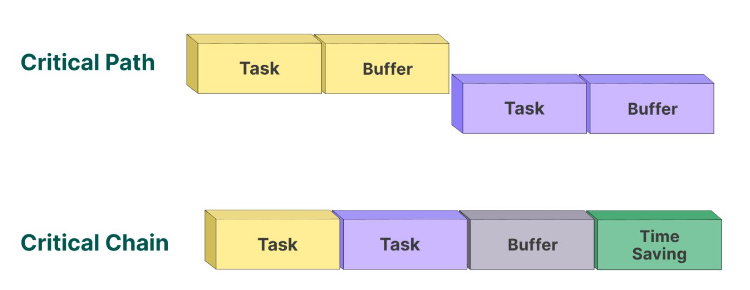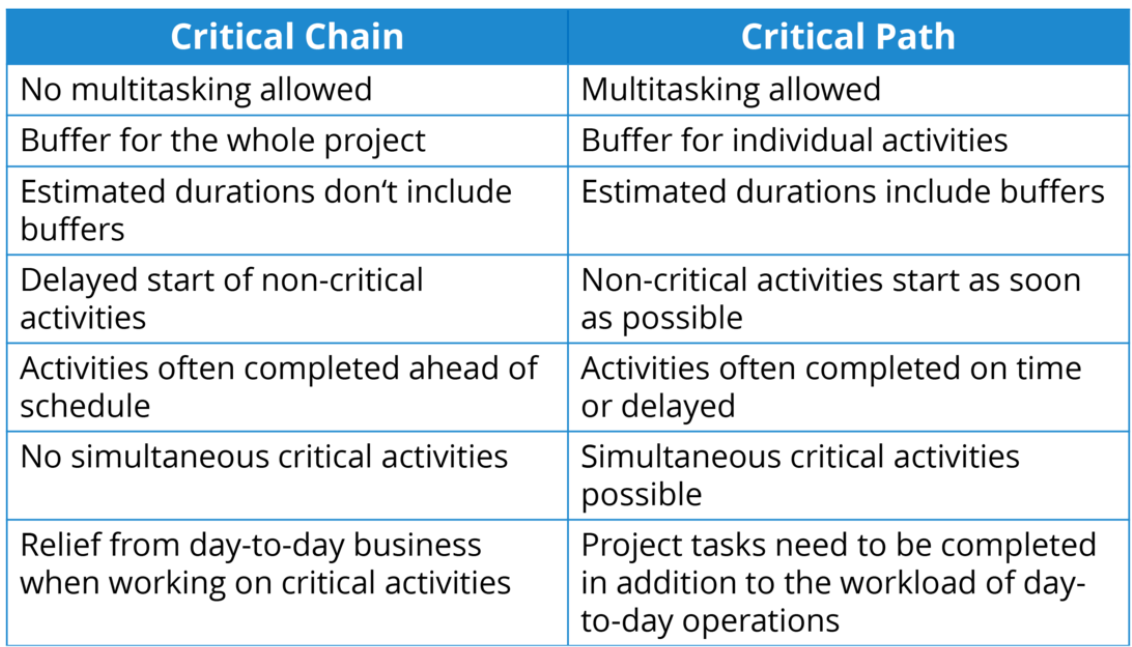Critical path method
The critical path method in project management is an approach used for identifying the sequence of important tasks and activities that need to be finished promptly to guarantee the project’s successful and timely completion.
Critical chain method
The critical chain method is actually built on the critical path method.
CCM is also used to plan, schedule, and execute projects more efficiently. It’s related to CPM but focuses on resource constraints and project buffers.
The method suggests treating a project similarly to a relay race. It means that it’s better to complete each task quickly before passing it on to the next person, emphasizing the overall goal rather than individual tasks.
To apply CCM, PMs need to estimate the project’s completion time and allocate 50% of that time as the baseline duration in project planning. The remaining time serves as a buffer for handling tasks and additional activities that might be added toward the end of a project.
Critical path vs. critical chain: what’s the difference?
Both types of scheduling methods can help ensure that project teams have their attention on the right parts of their projects.
A critical path is more focused on project duration and task dependencies, while a critical chain takes resource constraints and uncertainties into account, emphasizing the efficient use of resources and buffers to mitigate risks.
What other differences based on the methods’ benefits can be marked between them?
- Concept. A critical path centers around task management, whereas the primary focus in the critical chain method lies in resource and buffer management.
- Resource management. The critical path method assumes the availability of all resources simultaneously, which is somewhat of an approximation. On the other hand, the critical chain method considers limited resources and optimizes their utilization to create a more realistic timeline.
- Buffer usage. In the critical path method, buffers are allocated for individual tasks within a project, while in CCM, additional time is allocated for the entire project.
- Delays. In the critical path method, team members can immediately initiate non-essential activities, potentially leading to delays. In contrast, CCM may experience delays in such tasks due to its resource-centric approach.
- Multitasking. CPM permits multitasking, enabling the concurrent completion of two activities on a critical path. The critical chain approach doesn’t support multitasking.
- Monitoring. While the critical path method may encounter task duration extensions when additional time is needed, the critical chain method assumes real-time monitoring and incorporates buffers for every task to ensure on-time completion.

